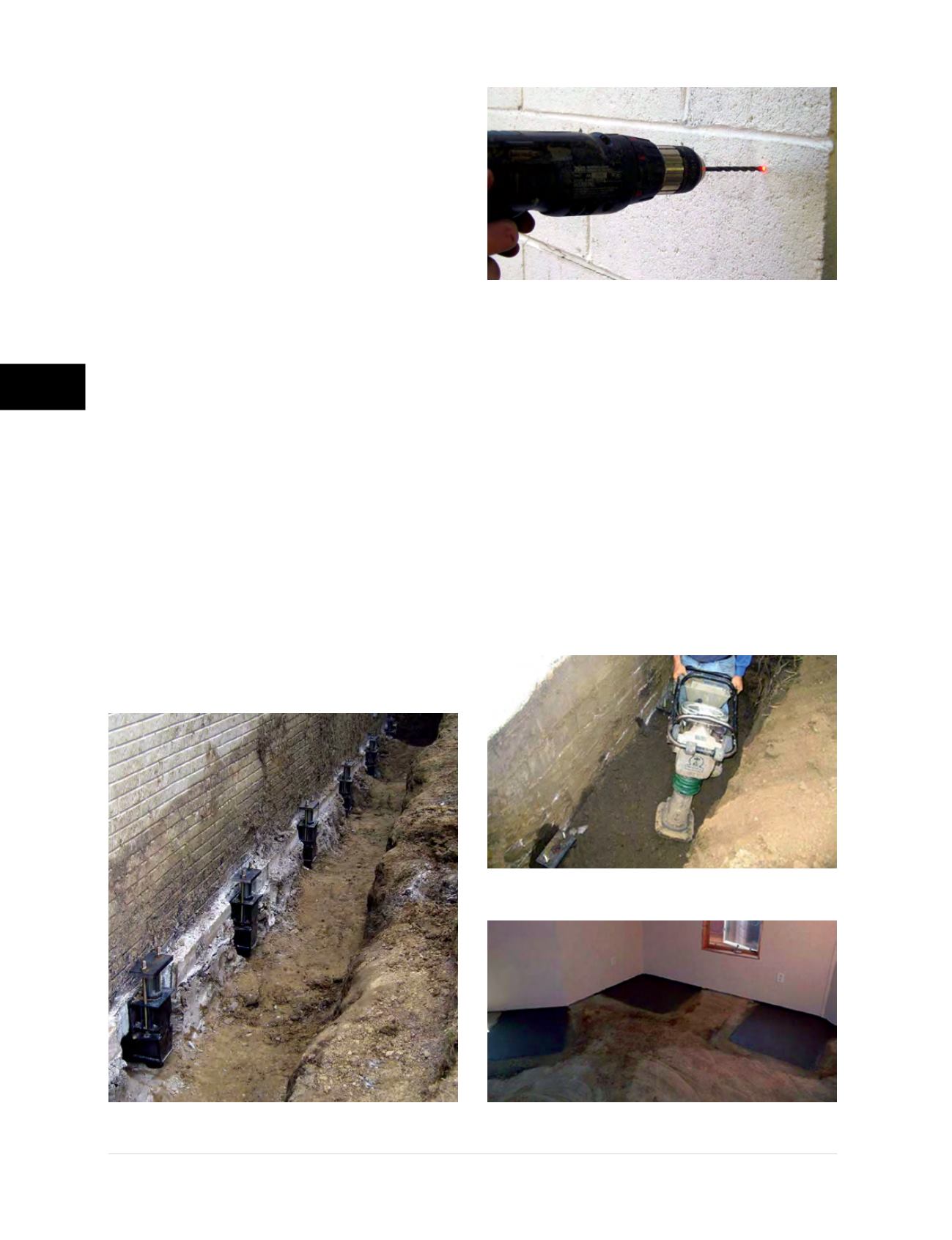
© 2014 Foundation Supportworks
®
,
Inc.
All Rights Reserved
p 244
Chapter 3
Hydraulically-Driven Push Piers
CHAPTER 3
HYDRAULICALLY-DRIVEN PUSH PIERS
• The system is first equalized by opening
the valves at each cylinder in sequence and
adjusting the system pressure. The system
should be equalized to a pressure on the order
of 1,000 psi.
• Slowly raise the pump pressure to raise
the foundation. Monitor the lift at each pier
location and after achieving proper lift, close
the valve to the top of the cylinder. If the piers
are for stabilization only, close the valves as
soon as noticeable movement occurs.
• When the structure has been lifted to the
proper elevation or the piers reloaded to the
required lock-off load (typically the design
working load), the load is locked off to the
piers by tightening the two nuts down to the
top of the pier cap.
• The pressure is released from the hydraulic
system and the lift cylinder assembly is
removed from the bracket
(Figure 3.10.q)
. The
pier system installation is essentially complete.
Permanent benchmarks may be established
within and beyond the work area, if approved
by the owner or client. These monitoring points
would allow relative movements to be measured
in the future, if necessary
(Figure 3.10.r)
.
Step 7 Backfill and Clean Up Work Area
• Backfill excavations and properly compact
with a mechanical tamper
(Figure 3.10.s)
.
This may also be an ideal time to improve the
drainage system around structures with below
grade living areas or working space. New
drain pipe can be installed along with free-
draining granular backfill provided the drain
pipe is connected to an interior sump system
or drained by gravity to daylight discharge
points. Interior pier installation may require
concrete patching and finishing after soil
compaction
(Figure 3.10.t)
.
Figure 3.10.q
System locked off; pier installation complete
Figure 3.10.s
Backfill excavations and compact soil
Figure 3.10.t
Concrete placement at interior pier locations
Figure 3.10.r
Benchmark established with a
shallow hole drilled into the concrete block


